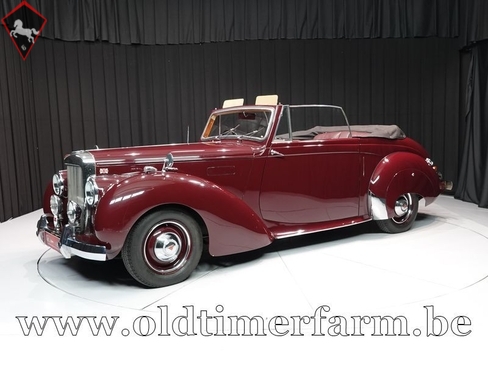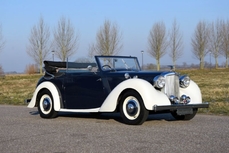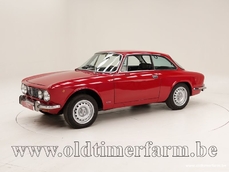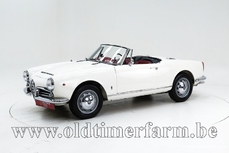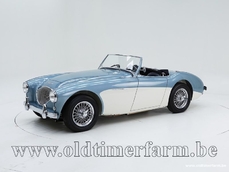Alvis TA14 21 '54 1954
Allgemeine Beschreibung :
Lowered price from span class="pq6dq46d tbxw36s4 knj5qynh kvgmc6g5 ditlmg2l oygrvhab nvdbi5me sf5mxxl7 gl3lb2sf hhz5lgdu">img src="https://static.xx.fbcdn.net/images/emoji.php/v9/t33/1/16/2705.png" alt="?" width="16" height="16" /> €57.950- €49.950 img src="https://static.xx.fbcdn.net/images/emoji.php/v9/t33/1/16/2705.png" alt="?" width="16" height="16" /> The origin of the name Alvis has been the subject of a great deal of speculation over the years. Some have suggested "aluminium and vis ("strength" in Latin), or perhaps it may have been derived from the Norse mythological weaponsmith, Alviss. De Freville, founder of Alvis, rejected however vigorously all of these theories. In 1921, he specifically stated that the name had no meaning whatsoever, but was chosen simply because it could be easily pronounced in any language. He reaffirmed this position in the early 1960s, stating that any other explanations for the source of the name were purely coincidental. The first car model using a de Freville's engine was the Alvis 10/30. It was an instant success and established the reputation for quality workmanship and superior performance for which the company was to become famous. In 1936 the company name was shortened to Alvis Ltd, and aircraft engine and armoured vehicle divisions were added to the company by the beginning of World War II. Smith-Clarke designed several models during the 1930s and 1940s, including the six-cylinder speed 20, the Speed 25, and the Alvis 4.3 Litre model. Car production was initially suspended in September 1939 following the outbreak of war in Europe, but was later resumed and production of the 12/70, Crested Eagle, Speed 25, and 4.3 Litre continued well into 1940. The car factory was severely damaged on November 14, 1940 as a result of several bombing raids on Coventry by the Luftwaffe, although ironically the armaments factory suffered little damage. After WW II, a solid, reliable and attractive car, the TA 14 fitted well the mood of sober austerity in post war Britain, but much of the magic attaching to the powerful and sporting pre-war models had gone and life was not easy for a specialist car manufacturer. Not only had Alvis lost their car factory but many of the prewar coachbuilders had not survived either and those that had were quickly acquired by other manufacturers. In fact, the post war history of Alvis is dominated by the quest for reliable and reasonably priced coachwork. Chief engineer Smith-Clarke retired in 1950 and Dunn took over as chief engineer. In 1950 a new chassis and six-cylinder 3 Litre engine was announced and this highly successful engine became the basis of all Alvis models until production ceased in 1967. Saloon bodies for the TA21, as the new model was called, again came from Mulliners of Birmingham as they had for the TA 14, with Tickford producing the dropheads. But with the first of these becoming part of Standard Triumph and the second being acquired by Aston Martin Lagond, it was clear by 1954 that new arrangements would have to be made. By this time some of the most original and beautiful designs on the 3 Litre chassis were being produced by master Swiss Graber coachbuilder and indeed these one-off designed cars are highly sought after today. From 1952 to 1955 Alec Issigonis (father of the Mini) worked for Alvis and designed a new model with a V8 engine which proved too expensive to produce. Rover took a controlling interest in Alvis in 1965, the TF 21 was launched in 1966, (available, like its predecessors in both saloon and drophead form and with either manual or automatic gearbox), the model was beginning to show its age despite a top speed of 127 mph - the fastest Alvis ever produced. With only 109 sold and with political troubles aplenty in the UK car manufacturing business at that time, production finally ceased in 1967. Specifications Bodywork Length: cm (in): 467 (184) Width: cm (in): 168 (66) Height: cm (in): 159 (62.6) Wheelbase: cm (in): 282 (111) Weight: kg (lb): 1510 (3330) Mechanics. Displacement: straight-six 2993 cc (183 cu in) forward Valve gear: 12 Fuel system: 2 Solex carburettors Gearbox: 4-speed manual Driven wheels: rear-wheel drive Maximum power: 89 hp at 4000 rpm Maximum torque: 204 Nm at 2000 rpm Maximum speed: 145 km/h (90 mph)
1954 Alvis TA14 21 '54 is listed zu verkaufen on ClassicDigest in Aalter by Oldtimerfarm for €49950.
Fakten der Auto
Karosserietyp : Auto Marke : Alvis Modell : TA14 Ausführung : 21 '54 Hubraum : 0.0 Modelljahr : 1954 Lage : Aalter Fahrzeug Anmeldung : Undefiniert
49950 €
People who viewed this Alvis TA14 also viewed similar Alvis listed at ClassicDigest
Other cars listed for sale by this dealer
über Alvis TA14
Der Alvis TA 14, auch bekannt als Alvis 2,5-Liter, ist ein bemerkenswertes Modell des britischen Automobilherstellers Alvis Ltd. Hier sind einige wichtige Punkte, die jeder über den Alvis TA 14 wissen sollte:1. Einführung nach dem Krieg: Der Alvis TA 14 wurde 1946, unmittelbar nach dem Zweiten Weltkrieg, eingeführt. Es markierte die Rückkehr von Alvis zur zivilen Automobilproduktion nach dem Krieg und bediente die wachsende Nachfrage nach zuverlässigen und komfortablen Automobilen.
2. Limousinenmodell: Der TA 14 war hauptsächlich als viertürige Limousine erhältlich und bot sowohl Fahrer als auch Passagieren Praktikabilität und Komfort. Er verfügte über einen geräumigen Innenraum mit viel Beinfreiheit und einem gut ausgestatteten Armaturenbrett.
3. Motor und Leistung: Der TA 14 wurde von einem 1,9-Liter-Reihenvierzylindermotor angetrieben, der etwa 65 PS leistete. Obwohl es sich nicht um ein Hochleistungsfahrzeug handelte, bot es dennoch sanfte und kultivierte Fahreigenschaften, die für den Touren- und Alltagsgebrauch geeignet waren.
4. Einzelradaufhängung: Der TA 14 war mit einer Einzelradaufhängung vorne ausgestattet, damals ein bedeutender Fortschritt. Dies trug zu einem verbesserten Handling und Fahrkomfort bei und unterschied es von vielen anderen Fahrzeugen dieser Zeit.
5. Technik und Verarbeitungsqualität: Der TA 14 zeigte Alvis' Engagement für hochwertige Technik und Handwerkskunst. Es zeichnete sich durch eine robuste Konstruktion, Liebe zum Detail und eine solide Verarbeitungsqualität aus und spiegelte den Ruf von Alvis als Hersteller ausgereifter und zuverlässiger Fahrzeuge wider.
6. Weiterentwicklung: Der TA 14 bildete die Basis für weitere Alvis-Modelle wie den TA 21 und die spätere Dreiliter-Serie, die Designverbesserungen und leistungsstärkere Motoren beinhalteten.
7. Historische Bedeutung: Der Alvis TA 14 spielte eine wichtige Rolle bei der Erholung und Neugründung von Alvis als Luxusautohersteller nach dem Krieg. Es stellte einen Wandel hin zu moderneren Designs und technischen Fortschritten in der Automobilindustrie dar.
Obwohl der Alvis TA 14 möglicherweise nicht den gleichen Bekanntheitsgrad wie einige der anderen Modelle von Alvis erlangt hat, bleibt er ein wichtiger Teil der Markengeschichte und veranschaulicht Alvis‘ Engagement für die Herstellung raffinierter und ausgereifter Automobile.
Bitte beachten Sie, dass es sich bei den hier bereitgestellten Informationen um einen allgemeinen Überblick handelt und es möglicherweise spezifischere Details oder Variationen im Zusammenhang mit dem Alvis TA 14 gibt.
